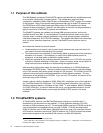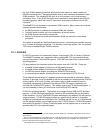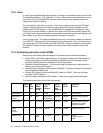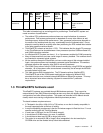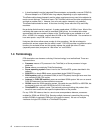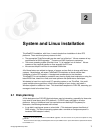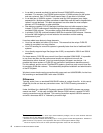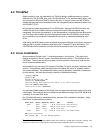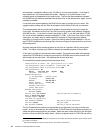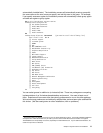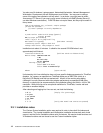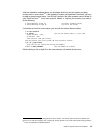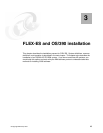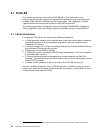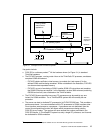
10 S/390 PID: ThinkPad Enabled for S/390
We selected a completely arbitrary size, 150 MB, for a Linux swap partition. In the light of
later experience, this could probably be smaller. However, it is a small fraction of our
available space and appeared to be a safe choice. The Red Hat documentation indicated
that 32 MB was the maximum possible boot partition size, so we selected that. Again, it could
probably be smaller.
It may take some experimentation with Disk Druid to mark a partition as Linux swap. We
suggest simply working with the Disk Druid options (Add, Delete, Edit) until you succeed.
The documentation did not provide much guidance for selecting the amount of space for
Linux itself. We elected to put all of Linux into the root file system, and arbitrarily assigned
3000 MB for this.
7
(If you elect to install “everything” in RH7.1, you will need about 2.5 GB.
Our more minimal installation actually used about 1.1 GB.) If you have more Linux or UNIX
experience, you might want to create several file systems for Linux
8
instead of placing
everything in a single root file system. Other than having about 25 MB available in /usr (for
later FLEX-ES installation and working files), there are no special requirements for your Linux
disk configuration.
We then assigned all the remaining space on this drive to a partition with the mount point
/s390. This name is arbitrary, but clearly indicates the intended purpose of the partition.
At this point, we had only a single hard disk installed. Our second hard disk will eventually
replace the CD-ROM drive; we cannot have both the CD-ROM drive and the second hard
disk installed at the same time. We initialized the second drive later.
The installation prompts continued with fairly basic items:
Choose partition to format: ALL (place asterisk in all lines)
LILO Configuration, special parameters: (leave blank) OK
LILO Configuration, where to place boot record: MBR
LILO Configuration: OK
Device Partition Type Default Boot
/dev/hda5 Linux native * Linux
Network Configuration:
[ ] use bootp/dhcp (deselect this)
IP address: 9.12.17.210
Netmask: 255.255.255.0
Default gateway: 9.12.17.150
Primary name server:
Secondary name server:
Ternary name server:
Hostname Configuration:
Hostname: tpefs1
Security level: No Firewall (use the space bar to change it)
Mouse: 3 button PS/2 mouse
Language support: English
Time Zone: (as appropriate)
Root password: xxxxxxxx (must be at least 6 characters)
Add user: aaaaaaa (use your name)
User password: xxxxxxxx (must be at least 6 characters)
The No Firewall security option was appropriate for our purposes, but may not match your
needs. As far as we know, this has no particular FLEX-ES security implications
9
and you can
select the options appropriate for your needs. Select any user name you like for the Add User
function, but do not select the name flexes. (flexes is a special name for FLEX-ES and will be
7
We intentionally specified considerably more space than we needed. We assumed the extra space would be useful
for a variety of purposes.
8
Separate file systems for /tmp and /home are the most common alternatives.



